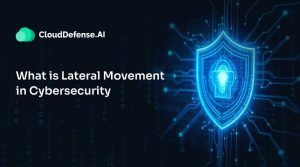What is a Zero-Day?
The term “zero-day” refers to newly discovered security vulnerabilities that attackers can exploit before developers or vendors can address them.
The name “zero-day” signifies the urgency with which the vendor has created and distributed a fix. These vulnerabilities are especially dangerous because no patch or mitigation strategy is available when they are first identified.
A zero-day attack occurs when threat actors take advantage of a zero-day vulnerability, often using a targeted method known as a zero-day exploit.
Here’s a breakdown of key terms related to zero-day:
- Zero-day vulnerability is a flaw in software or hardware that is unknown to the vendor or developer. Since no fixes exist, these vulnerabilities are highly susceptible to exploitation.
- Zero-day exploit is the technique or tool used by attackers to take advantage of a zero-day vulnerability. These exploits are often sold on dark web markets for significant sums due to their high effectiveness.
- A Zero-Day Attack is the act of using a zero-day exploit to infiltrate systems, steal sensitive data, disrupt operations, or cause harm.
Zero-day threats highlight the importance of security measures, such as frequent system updates, advanced threat detection, and real-time monitoring to identify suspicious activities even before vulnerabilities are patched.
How do Zero-Day Attacks Work?
A zero-day attack occurs when attackers target a vulnerability in software that has not yet been discovered or patched by the software developer. This means the vulnerability is unaddressed, leaving systems open to attack.
Cybercriminals typically identify these flaws through extensive research or by scanning for weaknesses using tools. Once a zero-day exploit is found, they create specialized malware or code to exploit the vulnerability, often bypassing traditional security measures like firewalls and antivirus programs.
The attack begins when the malicious code is deployed, usually through phishing emails, malicious downloads, or compromised websites. These tactics trick users into executing the exploit without realizing the threat. Once the malware is activated, it allows the attacker to gain unauthorized access to sensitive information, disrupt operations, or further penetrate the network.
Systems remain vulnerable to these attacks during the window between the discovery of the zero-day exploit and the software developer’s release of a patch. Attackers can take full advantage of this time to cause damage or steal valuable data. In some cases, zero-day exploits are traded on the dark web, further fueling the demand for exploiting these unpatched vulnerabilities quickly.
Who Carries out Zero-Day Attacks?
Zero-day attacks can be carried out by varying groups that may have different motivations:
- Cybercriminals are primarily motivated by financial gain. They exploit zero-day vulnerabilities to steal sensitive information, perpetrate identity theft, or extort money from individuals or organizations.
- Hacktivists: Hacktivists engage in zero-day attacks to further their political or social agendas. They aim to raise awareness or protest certain issues by compromising systems and making their attacks publicly visible.
- Corporate hackers: Motivated by gaining a competitive advantage, corporate hackers target rival companies to steal proprietary information, trade secrets, or intellectual property. They seek to undermine their competitors’ market position or gain insights into their business strategies.
- For-profit hackers specialize in discovering vulnerabilities and selling them to interested parties, such as companies or government agencies. Their primary goal is financial gain through the sale of zero-day exploits rather than directly exploiting the vulnerabilities themselves.
Who are the Targets for Zero-Day Exploits?
Zero-day exploits pose a significant threat to a wide range of targets across various sectors:
- Financial institutions: Hackers may target banks and financial organizations to steal sensitive financial information, conduct fraudulent transactions, or disrupt financial systems.
- Government agencies: Government entities are often targeted for the theft of classified information, espionage activities, or the disruption of critical infrastructure.
- Healthcare organizations: Hackers may exploit vulnerabilities in healthcare systems to access and steal sensitive medical records, disrupt medical services, or deploy ransomware attacks.
- Technology companies: Hackers target technology firms to steal trade secrets and intellectual property or disrupt their operations, potentially causing significant financial and reputational damage.
- Individuals: Individuals are at risk of having their personal information stolen, having unauthorized access to their devices or accounts, or being victims of identity theft through zero-day exploits.
- Critical infrastructure: Zero-day exploits can be used to disrupt vital services such as power grids, transportation systems, and other critical infrastructure, posing serious risks to public safety and national security.
Zero-Day Vulnerability Detection
Detecting zero-day vulnerabilities presents a unique challenge due to the inability of traditional signature-based anti-malware systems to identify such exploits. However, there are several methods and approaches that organizations can employ to detect and mitigate the risks associated with zero-day exploits:
Statistics-based monitoring
Organizations can analyze past exploits using data from anti-malware vendors and feed this information into machine-learning systems. While this approach can help identify current attacks, it may be prone to false negatives and false positives, limiting its effectiveness in detecting new threats.
Signature-based variant detection
All exploits possess a digital signature. Organizations can detect variants of prior attacks by feeding digital signatures into machine learning algorithms and artificial intelligence systems. This method relies on recognizing patterns within the digital signatures associated with known exploits.
Behavior-based monitoring
Malicious software often exhibits specific behaviors when probing a system. Behavior-based detection creates alerts when it identifies suspicious scanning and network traffic. It focuses on how malware interacts with devices rather than analyzing signatures or in-memory activity.
Hybrid detection
Combining multiple detection methods, such as statistics-based monitoring, signature-based variant detection, and behavior-based monitoring, in a hybrid approach can enhance the efficiency of zero-day malware detection. By utilizing the strengths of each method, organizations can better identify and respond to emerging threats.
Examples of Zero-Day Attacks
Examples of zero-day attacks illustrate the significant impact and widespread repercussions these vulnerabilities can have:
| Example of Attack | Description |
| Zerologon | Exploiting a vulnerability in the Netlogon protocol, attackers could gain domain administrator privileges, posing a severe risk to organizations’ security. |
| Sophos XG firewall | Cybercriminals exploited a SQL injection vulnerability to inject code into the firewall’s database, potentially compromising corporate systems connected to the firewall. |
| Internet Explorer | A flaw in the IE scripting engine allowed attackers to prompt users to visit malicious websites, enabling them to exploit the vulnerability and infect users’ devices. |
| Microsoft RCE | Zero-day attacks targeted remote code execution vulnerabilities in the Adobe Type Manager library, allowing attackers to remotely run scripts via malicious documents, compromising users’ devices. |
| Stuxnet | This sophisticated worm exploited four zero-day vulnerabilities in Microsoft Windows to target nuclear facilities in Iran, causing significant damage to centrifuges used for uranium enrichment. |
| Log4Shell | A zero-day vulnerability in Log4J allowed hackers to remotely control devices running Java apps, posing a widespread threat due to the widespread use of Log4J in popular programs. |
| 2022 Chrome attacks | North Korean hackers exploited a zero-day remote code execution vulnerability in Google Chrome, installing spyware and remote access malware on victims’ machines via phishing emails and spoofed websites. |
How to Protect Yourself Against Zero-Day Attacks
Zero-day attacks exploit vulnerabilities in software that haven’t been discovered or patched, making them one of the most challenging threats in cybersecurity. While no system is entirely immune, following these expert strategies can significantly reduce your risk:
- Stay Informed: Stay up-to-date on the latest cybersecurity news and alerts from your software vendors. Sometimes, vulnerabilities are discovered and publicized before they are widely exploited, giving you time to act. To stay ahead, regularly monitor vendor announcements and threat intelligence reports.
- Keep Systems Updated: Regularly update your software and operating systems with the latest patches and security fixes. Many zero-day attacks target outdated software, so enabling automatic updates ensures your systems are always protected against known vulnerabilities without manual intervention.
- Employ Advanced Security Solutions: Invest in tools specifically designed to guard against zero-day attacks. For instance, CloudDefense.AI provides comprehensive protection with features like:
- Hacker’s View™ for preemptive threat detection.
- Noise Reduction to prioritize critical risks.
- Smooth integration for enhanced scalability.
Such solutions are critical for identifying potential vulnerabilities before attackers exploit them.
- Minimize Your Attack Surface: To limit potential entry points for attackers, reduce the number of installed applications. Only use essential software, and periodically review your systems to identify and remove unnecessary or outdated applications.
- Strengthen Firewall Configurations: Firewalls act as a barrier between your network and potential threats. Configure your firewalls to allow only necessary traffic and block unauthorized access. This measure helps reduce exposure to zero-day exploits.
- Educate and Train Users: In many cases, zero-day attacks are successful because of human error. Educate employees or users on best cybersecurity practices, such as identifying phishing attempts and avoiding suspicious downloads. A well-informed team is your first line of defense.
Why Choose CloudDefense.AI for Zero-Day Protection?
CloudDefense.AI is a leading Cloud-Native Application Protection Platform (CNAPP) that provides proactive, AI-driven security to protect against zero-day threats. Key benefits include:
- Complete visibility and control over your cloud environment.
- Advanced risk prioritization ensures that the focus is on the most critical vulnerabilities.
- A user-friendly interface designed to integrate smoothly into existing workflows.
From code creation to deployment, CloudDefense.AI ensures your environment remains secure at every stage.
Ready to elevate your security?
Book a free demo and experience how CloudDefense.AI can safeguard your systems from today’s most advanced cyber threats.







